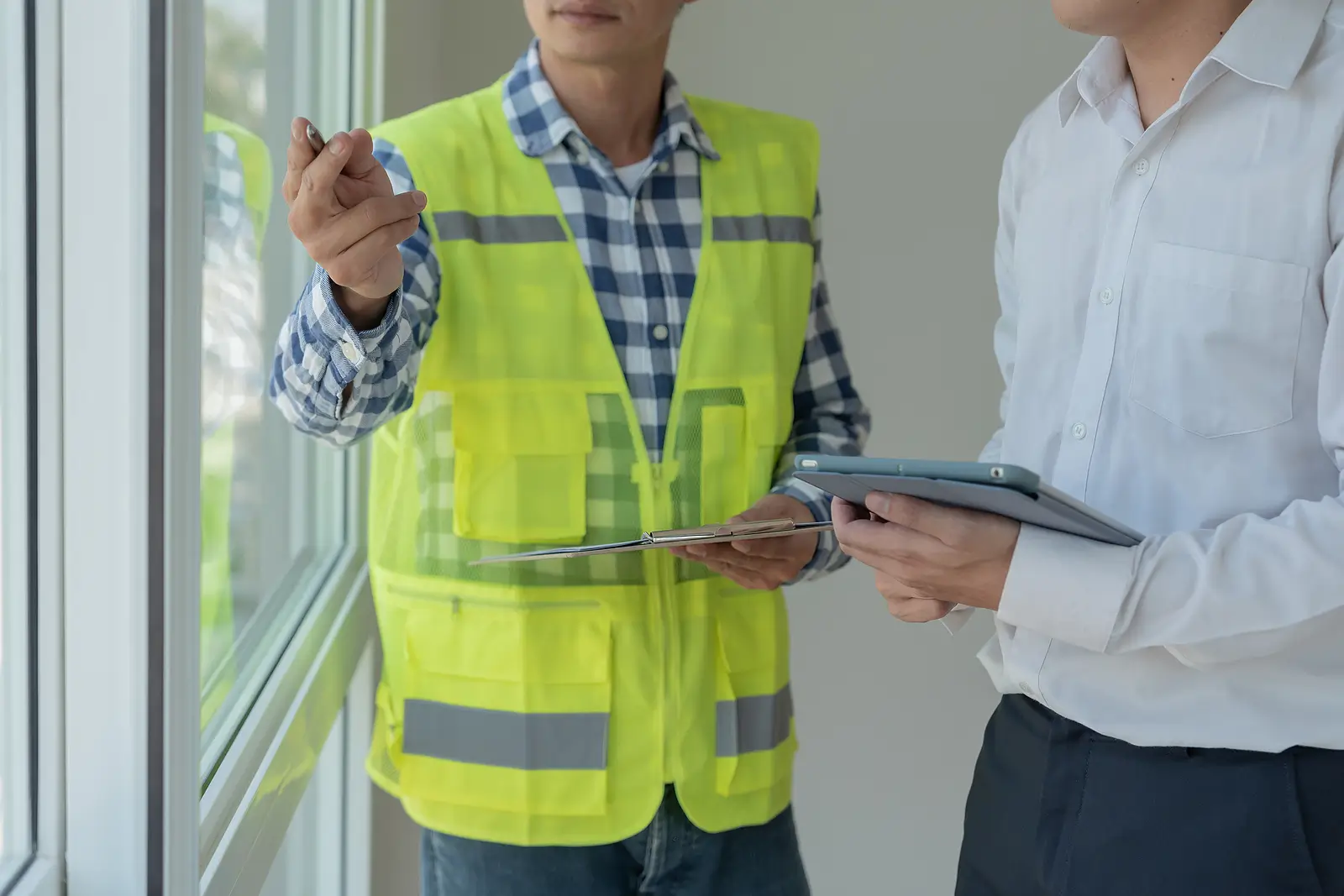As a property owner in Saratoga Springs, NY, maintaining your rental property's condition is critical to protecting your investment, ensuring tenant satisfaction, and ensuring legal compliance. A routine rental property inspection helps you identify maintenance issues early, document the property's condition, and reinforce expectations under the lease agreement.
Whether you're conducting move-in inspections, quarterly inspections, or move-out inspections, knowing how to prepare can make the inspection process smoother and more efficient. Here's what you need to know about preparing for a rental property inspection in Saratoga Springs.
Why Property Inspections Matter
Regular property inspections are a foundation of responsible rental ownership. You’ll have the opportunity to assess your rental property's condition, confirm tenant compliance, and ensure that everything is functioning properly, from the heating and cooling systems to plumbing, smoke detectors, and more.
Beyond just checking for physical wear and tear, a rental inspection also protects your legal interests. For example, a well-documented move-in inspection can help you fairly evaluate deductions from the tenant's security deposit at the end of the lease. Also, quarterly inspections can help you stay compliant with local laws and detect lease agreement violations or safety hazards before they become major issues.
Types of Rental Property Inspections
There are several types of rental inspections that you might conduct during a lease term.
Each serves a specific purpose:
1. Move-In Inspections
Before a new tenant occupies your rental unit, it’s essential to document the condition of every room. Take a tour of the property with the tenant, note any existing damage, and have both parties sign off. This step helps avoid disputes when the lease ends.
2. Quarterly Inspections
Quarterly inspections allow you to catch small maintenance problems before they become costly repairs. These inspections also ensure the tenant is complying with the lease agreement and maintaining the unit properly.
3. Routine Inspections
Scheduled inspections during a lease term, often every six months, help you monitor your rental property's condition and provide peace of mind for both you and your tenant.
4. Move-Out Inspections
Conduct a thorough inspection to compare the property's condition to its state at move-in at the end of the lease. This inspection determines if the security deposit should be returned in full or partially withheld due to damage beyond normal wear and tear.
How to Prepare for a Rental Property Inspection
1. Review the Lease Agreement
Before you conduct rental inspections, revisit the lease agreement to verify your rights and responsibilities. Most leases specify how often inspections can occur, what notice must be given, and what access the landlord is entitled to. Staying consistent with the lease ensures tenant compliance and prevents disputes.
2. Schedule the Inspection in Advance
Coordinate with the tenant to schedule a convenient time for the inspection. This shows respect for their personal belongings and daily routine, while helping prevent conflicts or delays. If a tenant refuses access without a valid reason, refer to your lease and local laws to determine your next steps.
3. Create a Detailed Checklist
Start your inspection with a clear strategy.
A thorough checklist should include:
Flooring, walls, and ceilings
Windows and doors
Heating and cooling systems
Appliances
Plumbing fixtures
Smoke and carbon monoxide detectors
Exterior areas, including landscaping and porches
By using the same checklist for move-in, routine, and move-out inspections, you can accurately track changes over time.
4. Document the Property’s Condition
Take photos or videos of each room to visually document the property’s condition. This documentation can be invaluable in case of disputes over damages or the tenant’s security deposit when the tenant moves out.
Give Proper Notice Before Entering
Under New York law and most lease agreements, you must provide proper notice before entering a tenant-occupied rental unit. Failing to do so can lead to legal consequences and damage your relationship with the tenant.
Typically, landlords are required to give 24–48 hours' notice before conducting inspections. Be clear about the purpose of the inspection, the areas to be checked, and the expected duration. When you provide proper notice and communicate openly, you’ll develop a positive landlord-tenant relationship.
What to Look for During an Inspection
Every inspection will vary slightly in what the landlord inspects, depending on your rental property's layout and age.
Here are a few universal issues to check for:
Water damage or leaks
Mold or mildew
Pest infestations
Unauthorized occupants or pets
Unreported damage or neglect
Fire hazards or safety concerns
Remember, inspections are not just about catching problems, they’re also an opportunity to address maintenance requests and reinforce your role as a responsive landlord.
How to Handle Problems That Arise
Act quickly and professionally if you find issues during an inspection, whether it’s a leaking faucet, a missing smoke detector, or a clear lease violation. Whether the issue is discovered during a mid-lease inspection or a routine check, provide a written summary of the findings to your tenant in the form of an inspection report, along with a reasonable timeline for repairs or corrections.
If the tenant has caused damage that violates the lease, you may need to deduct from the security deposit or issue a formal notice, depending on the severity. Always document your communications and reference local laws for guidance.
Responding to a Lease Violation After an Inspection
Discovering a lease violation during a rental property inspection can be frustrating, but how you respond is just as important as the violation itself. Whether it's unauthorized occupants, unapproved pets, or property damage beyond normal wear and tear, it’s essential to address the issue immediately and according to the terms of your lease agreement.
Start by reviewing the lease to confirm that a violation has occurred. Then, document the situation thoroughly with photos, notes in your inspection report, and any relevant communications. Provide the tenant with written notice outlining the nature of the violation, any corrective action required, and a deadline for compliance. In some cases, local or state laws may require you to offer the tenant an opportunity to remedy the situation before proceeding with further action.
If the tenant fails to correct the issue, you may need to issue a formal notice of lease violation, which could eventually lead to eviction proceedings if unresolved. Always ensure your response aligns with local laws and consult legal counsel or a qualified property manager if you're unsure about the next steps.
How Property Managers Can Help
If managing inspections, maintenance, and tenant communication feels overwhelming, consider working with experienced property managers. A professional team can schedule and conduct inspections on your behalf, ensure documentation is thorough, review local laws, and handle follow-up repairs efficiently.
Many property management companies use digital property management tools to keep records organized and streamline communication. This not only saves you time but also improves your ability to respond to issues quickly and keep your rental property in top condition.
Let Veno Properties Simplify Your Inspections
Managing rental property inspections doesn’t have to be overwhelming. At Veno Properties, we offer full-service property management, including scheduled inspections, detailed documentation, and responsive maintenance coordination. Whether you're a first-time landlord or a seasoned investor, we help protect your property and keep things running smoothly.
Contact us today to learn how we can help manage your rental property in Saratoga Springs, NY.
Frequently Asked Questions (FAQ)
1. How often should I conduct rental property inspections?
Property owners should perform a move-in inspection, quarterly inspections, and a move-out inspection. A routine inspection every six months is also recommended to stay on top of maintenance and ensure tenant compliance.
2. Can a tenant refuse a landlord inspection?
Yes, but only under specific circumstances. If you fail to provide proper notice or breach the lease agreement, a tenant can legally refuse entry. However, if you follow all required steps and respect local laws, you typically have the right to inspect the property.
3. What if I find unauthorized tenants or pets?
This is often a lease violation. Document your observations, notify the tenant in writing, and refer to your lease terms. Depending on your findings and local laws, formal action may be required.
4. Do I need to inspect personal belongings?
No. You should not touch or evaluate a tenant’s personal belongings. Focus your inspection solely on the property’s condition and any potential violations of the lease.
5. How do inspections affect the security deposit?
Both move-in and move-out inspections are key to determining whether deductions from the tenant’s security deposit are warranted. Proper documentation protects both you and the tenant and helps avoid disputes.


